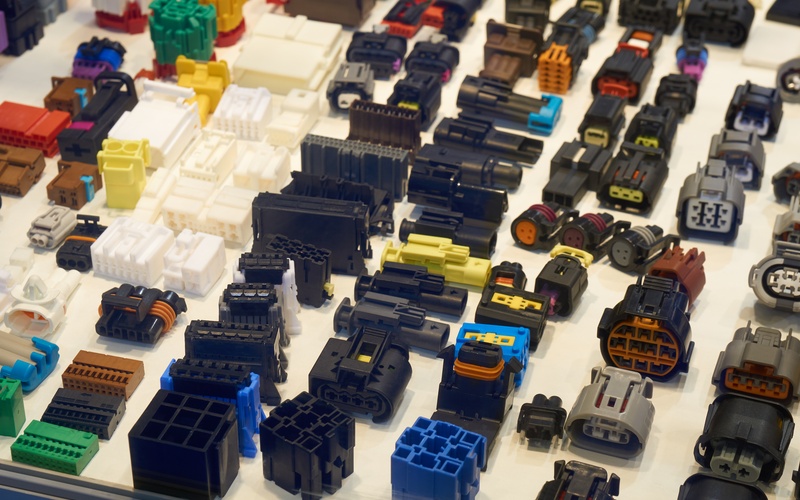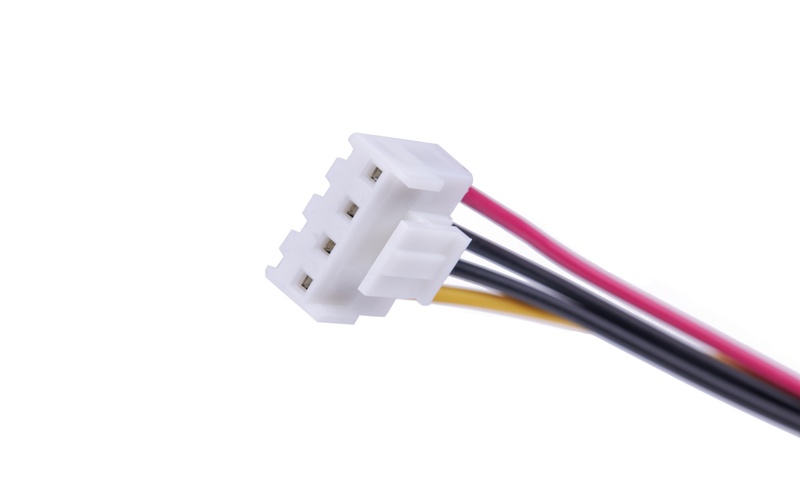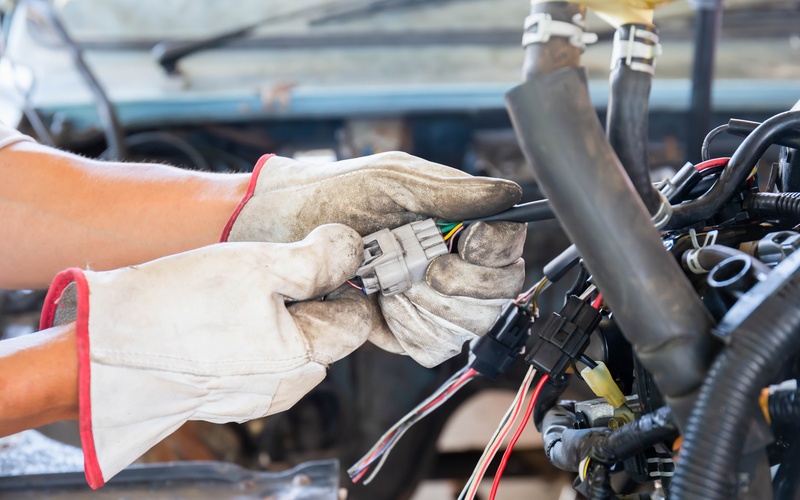Comparing OEM & Aftermarket Electrical Connectors
Comparing OEM & Aftermarket Electrical Connectors

Electrical connectors are integral components in countless industries, from automotive and aerospace to telecommunications and consumer electronics. Whether you are replacing a single connector or building a system from the ground up, the choice often comes down to OEM or aftermarket electrical connectors. Both options have their respective advantages, and understanding their distinctions is key to making an informed decision.
What Are OEM Electrical Connectors?
OEM, or original equipment manufacturer, electrical connectors are parts produced by the original company that designed and manufactured the equipment or product. These connectors are often synonymous with reliability and quality since they meet the exact specifications and standards set by the equipment’s initial design. OEM connectors are created to integrate seamlessly with your equipment, ensuring optimal performance.
One of the defining characteristics of OEM connectors is their certified compliance with regulatory and industry standards. For instance, automotive OEM connectors must meet rigorous quality-control measures to maintain safety, including resistance to heat, vibration, and extreme environmental conditions.
However, purchasing OEM electrical connectors often comes at a higher price. The production line, engineering resources, and quality assurance requirements contribute to their premium cost. Nevertheless, paying more often translates to predictable and consistent performance, which is crucial in applications where failure is not an option. Applications such as replacing 4-pin connectors or complex multi-pin configurations demand precision, making OEM products a safer choice for critical systems.

What Are Aftermarket Electrical Connectors?
Aftermarket electrical connectors are alternatives to original manufacturer components created by third-party companies. These manufacturers design products that fulfill the roles of OEM connectors, often at a significantly reduced cost. While they are intended to be compatible with original equipment, the quality of aftermarket options can vary widely depending on the manufacturer.
The appeal of aftermarket electrical connectors lies in their affordability and availability. Using aftermarket components can drastically reduce expenses for industries that encounter the need for frequent replacements or upgrades, such as automotive garages or custom electronics businesses.
Another key consideration is the range of options available. Third-party manufacturers often produce a broader assortment of connectors, allowing for greater flexibility in building bespoke systems or sourcing hard-to-find connectors for discontinued products.
That said, potential risks exist when choosing aftermarket connectors. Compatibility, longevity, and performance issues might arise due to their generalized manufacturing process. Unlike OEM connectors, many aftermarket products lack the same rigorous testing and certifications for reliability under extreme conditions. Thoroughly vetting suppliers and ensuring that connectors meet needed standards is essential when considering aftermarket options.
Performance Comparison
Performance is one of the most critical factors to consider when comparing OEM and aftermarket electrical connectors. Each connector’s ability to transmit electrical current or data without fault and withstand environmental challenges directly impacts system reliability.
OEM connectors deliver consistent and high-performance results due to their precision engineering and rigorous quality checks. Specific industries, such as aerospace and medical devices, prefer OEM connectors due to their unmatched reliability and adherence to strict regulatory guidelines. Some equipment specifications demand connectors that meet ISO or UL requirements, which OEM products generally satisfy.
By contrast, aftermarket connectors can be hit or miss, depending on the manufacturer. Reliable third-party manufacturers may offer products nearly identical to their OEM counterparts at a fraction of the cost. Others may cut corners during production, leading to lower quality.
For instance, an automotive aftermarket connector may perform sufficiently for casual, non-critical applications like interior lighting. However, systems requiring resistance to high vibrations or water exposure, such as engine management or GPS antennas, might fail prematurely if components are substandard.

Cost Considerations
The difference in cost between OEM and aftermarket connectors is often the deciding factor for many businesses. OEM connectors, known for their superior quality and compatibility, come with higher price tags due to the extensive manufacturing and testing processes involved. This makes OEM connectors ideal when downtime, failures, and system maintenance carry heavy financial consequences.
On the other hand, aftermarket connectors appeal to budget-conscious consumers. Many suppliers provide connectors that mimic OEM standards at a fraction of the price. For small-scale or intermittent projects with lower overall risk, saving money through aftermarket components is often worth considering.
It is important to strike the right balance between cost and quality. Deciding where you can afford to rely on aftermarket solutions and where OEM products are necessary is critical for immediate financial savings and long-term reliability.
Durability and Longevity
OEM connectors are designed with durability in mind, using high-quality materials and advanced engineering to withstand the conditions specified for their intended use. The longevity of these connectors provides peace of mind for industries such as military defense, automotive engines, and telecommunications systems, where any downtime can lead to significant repercussions.
Aftermarket connectors may offer respectable durability, but the variability in manufacturing standards raises concerns. Low-cost connectors designed with subpar materials can degrade faster, causing electrical resistance, overheating, or outright failure over time.
When selecting aftermarket connectors, scrutinize the manufacturer’s reputation and ask for certifications to verify product longevity under harsh working environments.
Applications and Versatility
OEM connectors prioritize consistency, which makes them less versatile in some applications but ideal for specific equipment or devices. Known for their custom-fit design, OEM connectors are essential when users require seamless integration within existing systems.
Meanwhile, aftermarket connectors shine in their adaptability. Due to the broader options produced by third-party manufacturers, these connectors cater to large projects and systems requiring unique or non-standardized configurations. However, verifying compatibility with current products and systems remains crucial to ensure reliable results.
Additionally, aftermarket connectors often provide greater flexibility to achieve tailored results for customers working on more creative or less regulated projects, such as custom PCs or hobby electronics.
Vendor Support and Warranty
Vendor support and warranty coverage are other considerations to keep in mind when choosing between OEM and aftermarket connectors. Comprehensive warranties from the original manufacturer usually back OEM connectors. This level of support includes technical assistance and straightforward returns for defective parts, adding value for industries that prioritize dependable customer service and relationships.
Although aftermarket connectors generally offer less robust warranty options, some reputable third-party companies provide excellent customer support. However, the varied nature of third-party warranties means researching and reviewing a vendor’s reputation becomes mandatory before purchase.
Which Is Right for You?
Choosing between each type of electrical connector depends on your needs, budget, and risk tolerance. OEM connectors ensure reliability and performance for mission-critical equipment, making them indispensable in vital machinery, safety systems, and other regulated environments.
If your budget is limited or your application does not require the same durability and precision, aftermarket connectors may present a cost-effective alternative. Research reputable suppliers carefully to balance cost savings with quality assurance.
Investing time into evaluating your priorities and application scenarios is critical to maximizing the reliability and efficiency of your electrical systems. By understanding the differences between OEM and aftermarket options, you can make informed decisions that support your project’s success and longevity.

You must login to post comments.